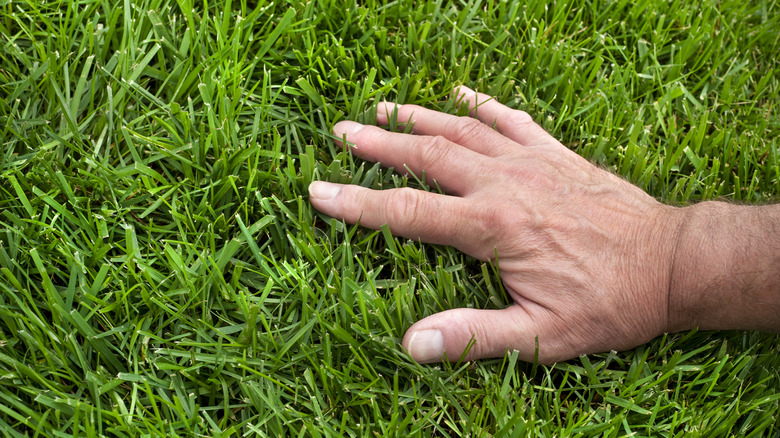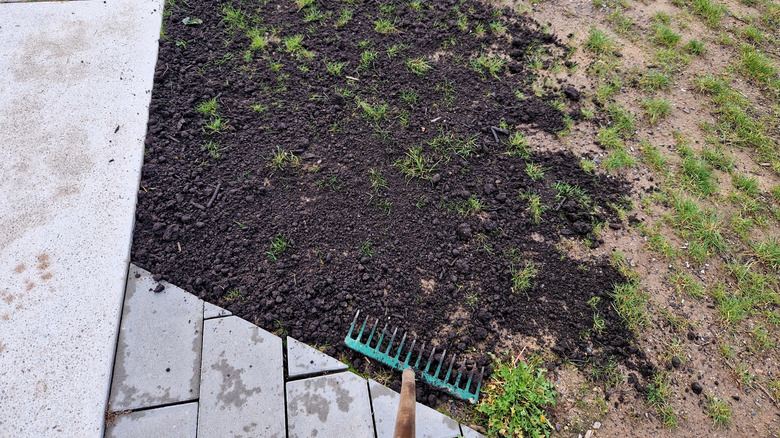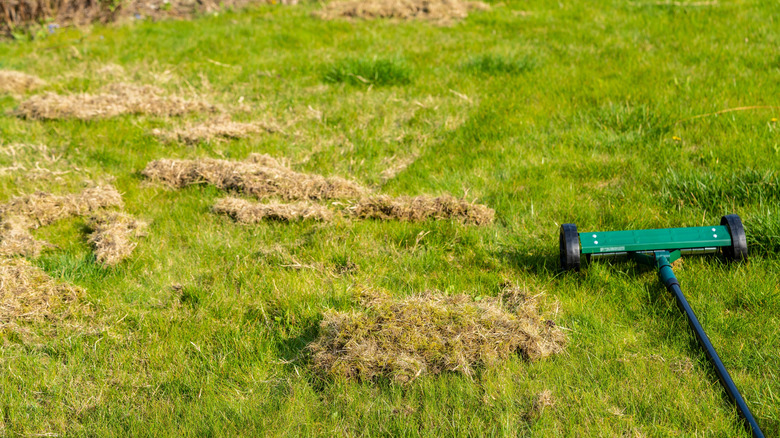The One Solution To Get Better Looking Grass Without A Struggle
We may receive a commission on purchases made from links.
For many homeowners, keeping your lawn looking green and healthy is an ongoing struggle. Growing a healthy lawn without harsh chemicals is an increasingly popular goal, but it adds a new level of difficulty to maintaining a lush lawn. There is one easy method to feeding and improving your grass that doesn't require lots of equipment or specialized chemicals. Top dressing your lawn can help improve trouble spots, or even give your whole lawn a boost. By adding no more than a ½ inch of material over your troubled areas, you can easily feed the roots beneath, while also helping replenish potentially depleted soil.
Quite often, people simply add a thin layer of compost to their lawn's trouble spots, but you could also mix up a batch of top soil, sand, decomposed organic matter, and other components that could help address your issues. You want to do this for a number of reasons, but primarily, it's because top dressing isn't always just about growing more grass or feeding the soil. It can also help level out uneven spots, in which case you might need more than compost to get the job done. If you're filling in holes or hollowed out areas, you may require more than ½ an inch of material. Generally, though, you'll want to have a lighter touch to avoid smothering your grass.
When to top dress your lawn
Apart from filling in bare patches or leveling out bumpy areas, you can also top dress your lawn as a preventative measure to keep your turf growing healthy and strong. The primary goal of top dressing is to build up the health of the soil which may have depleted over time. Compost is particularly effective at adding organic matter back to your soil, and building up beneficial microbes. This ultimately negates the need for copious amount of fertilizer, and can also reduce thatch.
You can start top dressing in the fall. Not only is this typically one of the best times to plant grass seed, but it also allows you to assess the state of your lawn after a long summer of use, and potentially hot weather. However, if you emerge from a long winter looking at a scraggly lawn, you can also tackle this project in the spring, setting your lawn up for success through the summer.
How to get the best results for a better-looking lawn
First, you want to dethatch your lawn before mowing it with your bagger on, to catch the clippings. Learn more about what it means to dethatch your lawn. Avoid scalping your lawn when you mow, but cut it short enough that the blades of grass will not bend when you add your top dressing. You want to avoid mowing for at least a week or until grass is growing strongly through the applied material, so keep this in mind. You may want to aerate your lawn to help move the material down into the soil, but this isn't strictly necessary. If you do choose to aerate, be sure you remove any plugs left behind.
Using the right materials is also critical. Yes, putting down fine compost is an option but you may also want to ensure your top dressing has a similar texture to the dirt under your turf. This avoids creating separate layers that might restrict water flow. Adding amendments like top soil and sand can help. Or, you can buy a pre-made top dressing mix such as Garden Magic Compost and Manure.
You can use a compost spreader or simply shovel the top dressing onto your soil. If you're doing an entire lawn, a compost spreader will help you achieve an even application. If you're just addressing trouble spots, shaking the new soil into place will suffice. Finish up by raking the material into your soil, spreading it out evenly, and giving it some water to help it percolate down into the ground.


